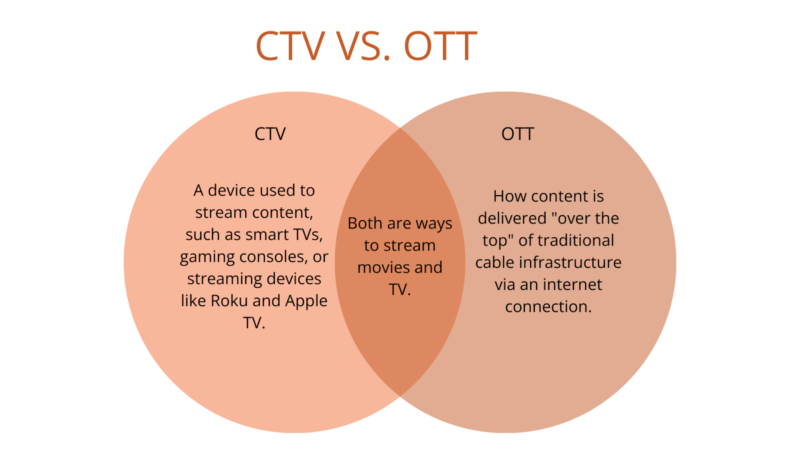CTV Ad Playbook: High-Converting Streaming Campaigns
By Single Grain Team | April 10, 2025
Connected TV (CTV) advertising has transformed from an emerging channel to a cornerstone of modern advertising.
As streaming platforms dominate, brands that master CTV advertising gain a powerful advantage in reaching engaged audiences with precision targeting and measurable results. Here’s your CTV ad playbook where you’ll learn how to create a high-converting campaign.
Key Highlights:
- CTV ad spending is projected to reach $33.35 billion in 2025, a 15.8% year-over-year increase.
- 238 million Americans will watch Connected TV in 2025, with 99% of US households subscribing to at least one streaming service.
- Programmatic advertising accounts for 75% of CTV buys, enabling sophisticated audience targeting.
- Interactive CTV ads drive 3.5x higher engagement than standard video ads.
- Brands implementing cross-device attribution see 40% improvement in campaign performance metrics.
- Frequency capping at 2-3 weekly exposures maximizes brand recall while preventing ad fatigue.
TABLE OF CONTENTS:
Understanding CTV in 2025
Streaming TV has evolved into a complex ecosystem of platforms, devices, and content types. Understanding the latest trends and technologies is essential to ensure you use advanced targeting with measurable results. Here are the key components of CTV.
Defining CTV vs. OTT

While often used interchangeably, these terms represent different aspects of streaming.
- Connected TV (CTV) is a device used to stream content, such as smart TVs, gaming consoles, or streaming devices like Roku and Apple TV.
- Over-the-top (OTT) describes how content is delivered “over the top” of traditional cable infrastructure via an internet connection.
In practical terms, CTV advertising specifically targets viewers watching content on television screens, while OTT encompasses all streaming content, including mobile and desktop viewing.
Content Monetization Models
Streaming platforms employ various monetization strategies that affect how advertising is integrated, such as:
- AVOD (advertising-based video on demand): Free ad-supported content (Tubi, Pluto TV).
- SVOD (subscription video on demand): Paid subscriptions without ads (traditional Netflix).
- Hybrid models: Tiered offerings with ad-supported and ad-free options (Hulu, Peacock, Disney+).
- FAST (free ad-supported streaming TV): Linear-style channels with scheduled programming and ad breaks (Roku Channel, Samsung TV Plus).
Hybrid models have been particularly significant, with major platforms like Netflix and Disney+ introducing ad-supported tiers to capture price-sensitive viewers. This expansion has created new inventory opportunities for advertisers across premium content environments.
Building a High-Converting CTV Campaign Strategy
Successful CTV campaigns require a strategic approach that leverages the platform’s unique capabilities while addressing its distinct challenges. Here’s how to create a measurable CTV ad campaign.
Audience Targeting
CTV’s digital foundation enables sophisticated targeting that traditional TV can’t match:
- First-party data activation: Leverage customer data to create custom audience segments based on purchase history, website interactions, and engagement patterns. This approach delivers the highest ROI by targeting viewers with demonstrated interest in your brand.
- Contextual targeting: Place ads alongside relevant content that aligns with your brand values and audience interests. This strategy is becoming increasingly crucial as privacy regulations evolve.
- Behavioral targeting: Reach viewers based on their demonstrated interests and activities across devices, creating more relevant ad experiences.
- Household-level precision: Use IP-based targeting to target specific households that match your ideal customer profile, enabling family decision-maker messaging.
- Look-alike modeling: Expand your reach by targeting viewers who share characteristics with your best customers, balancing acquisition with efficiency.
Creative Optimization for the Big Screen
CTV ads usually appear on the largest screen in the home. Brands must invest in high-quality creatives that capitalize on the viewer. Here are some tips to achieve this.
- Production quality matters: Invest in professional-grade production with high-resolution visuals and clear audio. Poor quality stands out negatively on large screens.
- Optimal length strategy: While 30-second spots remain standard, test different durations based on campaign objectives (15 seconds, 30 seconds, or 60 seconds).
- Brand identity front-loading: Place key brand elements in the first five seconds to establish recognition even if viewers mentally disengage.
- Strong call-to-action: Include clear, actionable next steps that accommodate the non-clickable nature of many CTV environments, such as QR codes for mobile engagement or SMS text options for an immediate response.
- Creative refresh cadence: To prevent ad fatigue, update creative every 10-20 days for seasonal campaigns and every 4-6 weeks for evergreen messaging.
Frequency Management and Cross-Platform Coordination
Effective frequency management prevents ad fatigue while ensuring sufficient exposure. Here are ways to do this.
- Optimal frequency caps: Research indicates that 2-3 exposures per week per household achieves 90% of maximum brand recall without diminishing returns.
- Cross-device orchestration: Coordinate messaging across CTV, mobile, and desktop to create a cohesive user journey.
- Daypart targeting: Align ad delivery with viewing habits and campaign objectives.
Measurement and Attribution Frameworks
CTV combines television’s impact with digital’s measurability, requiring sophisticated attribution approaches. These include:
- Incremental lift analysis: Compare conversion rates between exposed and control audiences to measure the actual impact of CTV campaigns.
- Multi-touch attribution: Implement models that account for CTV’s role in the broader customer journey, particularly its influence on upper-funnel awareness and consideration.
- Conversion tracking: Utilize QR codes, vanity URLs, and post-view attribution to connect CTV exposure to website visits, app downloads, and purchases.
- Brand lift studies: Measure awareness, perception, and purchase intent changes through surveys comparing exposed and unexposed audiences.
- Performance benchmarking: Establish category-specific KPIs based on industry benchmarks and historical performance to set realistic expectations.
Advanced CTV Advertising Tactics for 2025
Advertisers can apply several advanced tactics to deliver exceptional results for a CTV advertising campaign. These advanced tactics use machine learning, data analytics, and audience segmentation to extract behavioral insights and better target users. Here are ways to use this technology.
Interactive Ad Experiences:
Interactive ads are when advertisers include features like QR codes so viewers can engage directly with the ad. Here are examples of interactive ads that are perfect for CTV:
- Shoppable content: This feature will allow viewers to browse products, add items to cart, and purchase directly through the TV screen or connected devices.
- Choose-your-own-adventure: Allow viewers to select their preferred content path, increasing engagement and providing valuable preference data.
- Interactive polls and quizzes: Incorporate interactive elements that encourage active participation rather than passive viewing.
- QR code integration: Drive cross-device actions by incorporating scannable QR codes that connect the TV experience to mobile devices.
Programmatic Buying Optimization
Optimizing your buying approach is critical with CTV ads. Here are ways to do this:
- Private marketplace deals (PMPs): Negotiate direct deals with premium publishers to secure quality inventory with greater transparency.
- Supply path optimization: Identify the most efficient paths to desired inventory to reduce tech fees and improve working media percentages.
- Contextual targeting: As cookie alternatives evolve, leverage content-based targeting to reach relevant audiences while respecting privacy.
- Dynamic creative optimization (DCO): Implement systems that automatically adjust creative elements based on viewer data, content context, and performance metrics.
Addressable TV Integration
Combining traditional TV’s reach with digital’s precision, addressable TV represents a powerful complement to CTV strategies. Here are ways to do this:
- Unified audience planning: To maximize reach, develop strategies across CTV and addressable TV.
- Complementary media scheduling: Use addressable TV to reach cable-loyal households while leveraging CTV for cord-cutters and cord-nevers.
- Consistent measurement frameworks: Implement attribution models that account for addressable and CTV exposures to understand actual campaign impact.
Overcoming Common CTV Advertising Challenges
Despite its advantages, CTV advertising presents unique challenges that require strategic solutions. Here are a few examples.
Fragmentation Management
The proliferation of streaming platforms creates inventory fragmentation. Here are ways to solve this issue:
- Consolidated buying platforms: Utilize DSPs and managed service providers that offer access to multiple inventory sources through a single interface.
- Audience-first planning: Focus on reaching your target audience regardless of platform rather than prioritizing specific publishers.
- Unified measurement: Implement cross-platform solutions that aggregate performance data across inventory sources.
Fraud Prevention
As CTV investment grows, so does fraudulent activity. Fortunately, there are methods to safeguard your brand:
- Inventory quality verification: Work with partners implementing app-ads.txt and sellers.json protocols to verify legitimate inventory.
- SSAI validation: Ensure server-side ad insertion implementations include proper validation to prevent spoofing.
- Performance pattern analysis: Monitor for unusual patterns in performance metrics that might indicate fraudulent activity, such as impossibly high completion rates.
Privacy Compliance
Evolving privacy regulations impact targeting capabilities. Here are ways to advertise your brand while staying compliant.
- Contextual targeting expansion: Develop sophisticated contextual targeting strategies as alternatives to individual-level tracking.
- First-party data activation: Prioritize your owned customer data for audience development and targeting.
- Transparent opt-in processes: Ensure all data collection and usage adheres to current privacy regulations and industry best practices.
Future-Proofing Your CTV Strategy
You should future-proof your CTV advertising strategy while staying adaptable. Here are some tips to achieve this:
- AI-powered optimization: Implement machine learning systems that automatically optimize creative selection, audience targeting, and budget allocation.
- Voice-activated commerce: Prepare for the integration of voice commands that allow viewers to interact with ads through connected home devices.
- Shoppable TV expansion: Develop capabilities to quickly create shoppable experiences as more platforms introduce native commerce functionality.
- Cross-media measurement: Invest in measurement solutions that provide a unified view of performance across all advertising channels, including CTV.
Use This CTV Ad Playbook to Build a High-Converting Campaign
CTV ads are replacing traditional TV ads. If you’re new to this advertising strategy, this CTV ad playbook will help you convert more viewers and drive measurable results.
While CTV advertising is effective, it can be complex. Whether you’re just beginning your CTV advertising journey or looking to optimize existing campaigns, the key is to start with clear objectives, implement rigorous testing, and continuously refine your approach based on performance data.
Need help developing and implementing your CTV advertising strategy? Contact Single Grain’s experts for a personalized consultation on how to maximize your streaming campaign performance.




